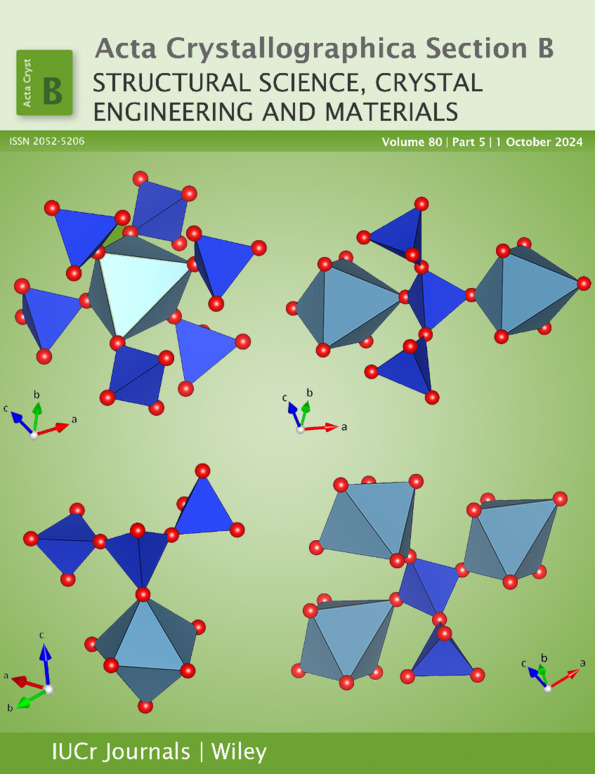Substitutional/positional disorder of biguanide and guanylurea in the structure of a decavanadate complex [(Bg)(HV10O285−)]0.4[(HGU+)(V10O286−)]0.6(H2Met2+)2(H3O+)·8H2O
Abstract
A hydrated salt of decavanadate containing diprotonated metforminium(2+) (H2Met2+), hydronium (H3O+) and either neutral biguanide (Bg) or monoprotonated guanylurea (HGU+) exhibits a previously seen complex charge-stabilized hydrogen-bonded network [Chatkon et al.(2022). Acta Cryst. B78, 798–808]. Charge balance is achieved in two ways through substitutional disorder: a 0.6 occupied HGU+ cation is paired with a V10O286− anion, and a 0.4 occupied neutral Bg molecule is paired with a HV10O285− anion, with the remaining charge in both cases balanced by two H2Met2+ dications and one H3O+ monocation. Bg/HGU+ moieties exhibit bifurcated N—H…O hydrogen bonding to the H3O+ cation and are substitutionally/positionally disordered along with the H3O+ cation about an inversion center. The HGU+ V10O286− synthon seen in the previous study occurs again. Bg exhibits bifurcated hydrogen bonding from two amino groups to two rows of cluster O atoms running diagonally across the equatorial plane of the HV10O285− anion with a return hydrogen bond from the cluster H atom to the imino N atom of the Bg. Thus, a Bg…cluster synthon similar to the HGU+…cluster synthon previously reported is found. The disordered moieties occupy spaces with excess volume in the 3-D network structure. Interestingly, when the crystallographic unit cell of the current compound, whose X-ray data was collected at 100 K, is compared with that of a previous compound exhibiting the same supramolecular framework, unit-cell parameter c does not shorten as a and b expectantly do because of the lower data collection temperature. The lack of contraction on unit-cell parameter c is possibly due to the supramolecular structure.




